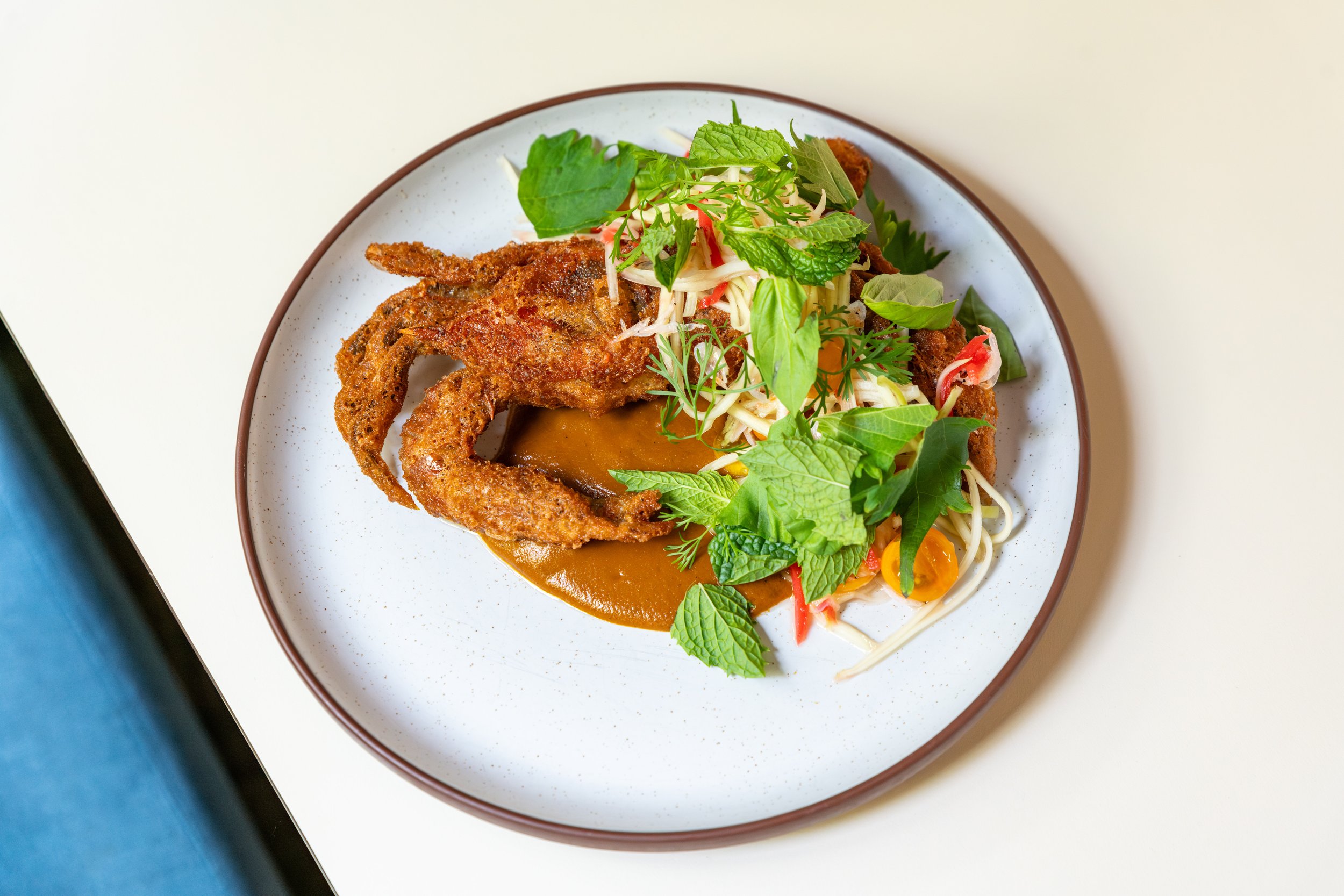Ducks to Dollar$
Chef Chris Barton of Statewide is going to inspire you to roll yourself a signature dish that can give a reliable boost to your restaurant's revenue. You lucky duck.
chef chris barton of stateside | Photos: megan swann
Walk into the dining room at Stateside on any given night and you can be sure to spot an order of duck rolls on nearly every table.
The menu mainstay has been there since Stateside’s opening five years ago, and Chef de Cuisine Chris Barton estimates they sold about 70,000 rolls within the first two years alone. That’s 70,000 duck rolls, two rolls to an order, selling at $10 per orde. We’ll give you a minute to do the math….that number, the amount you just calculated, comes solely from a dish filed under Small Plates.
“We have some part of the [duck roll] process going essentially at all times, every single day” says Barton. So, let’s break that down. Peking duck comes in from EC Wilson Meat Co., and is trimmed and it’s fat rendered (and used for specials or confiting). The ducks are then slow- poached in a soy-based master stock that has been bubbling since the opening of Stateside. The meat is ground in a Robot Coupe with sautéed onion, garlic, sweet soy, and fish sauce. The prep team then starts the rolling process, rolling anywhere from 150 to 400 rolls, depending on the day. The filling, which contains about 2 to 3 ounces of duck per roll, is wrapped in TYJ cellophane wrappers. At pick-up, they’re fried and rolled again in hydrated rice paper with shiso, spearmint, Thai basil, and lemon balm. Two rolls are cut on the bias, plated, and served with one ounce of soy-oyster dipping sauce.
The Duck Rolls at Stateside
And now for more math. Take it away, chef!: “In terms of cost, you need to calculate yields on all product used first,” Barton says. “The cost per pound and ounce will actually be a bit higher than what you pay for it, depending on the yield you get when prepped. Calculating for this, each roll costs us $1.04 to produce. Each order is two rolls putting the total cost to us at $2.08, putting our food cost for the item at 17 percent. Being a high-volume restaurant, low cost items such as this allow us to be more creative with other items on the menu in terms of product use. It also means it’s ok if these dishes have a slightly higher cost, as they’ll be offset by the volume of the rolls.”
If you want to increase your bottom line by emulating a similar concept that suits your restaurant, Barton says, “use the highest quality ingredients available to you so that you can make a good product that people want to come back for. More practically speaking, it’s important to think about logistics when designing any menu and in particular a dish that you hope will sell well and drive volume. Therefore, it needs to be something that can be relatively easily prepped and quick on the pick up during service." Like a duck roll.









